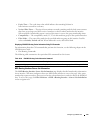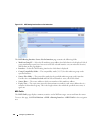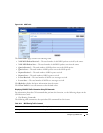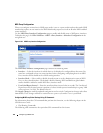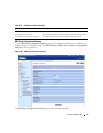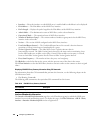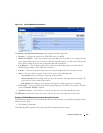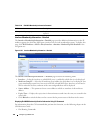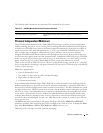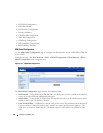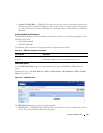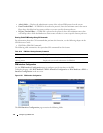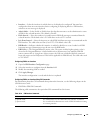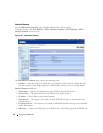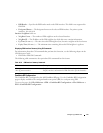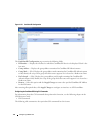
Configuring IP Multicast 767
The following table summarizes the equivalent CLI commands for this feature.
Protocol Independent Multicast
Protocol Independent Multicast-Dense Mode (PIM-DM) protocol is a simple, protocol-independent
multicast routing protocol. It uses an existing Unicast routing table and a Join/Prune/Graft mechanism
to build a tree. PIM-DM creates source-based shortest-path distribution trees that make use of RPF. It
cannot be used to build a shared distribution tree, as is the case in PIM-SM. PIM-DM assumes that
when a sender starts sending data, all downstream routers and hosts want to receive a multicast
datagram. PIM-DM initially floods multicast traffic throughout the network. Routers that do not have
any downstream neighbors prune back the unwanted traffic. In addition to PRUNE messages, PIM-DM
makes use of graft and assert messages. Graft messages are used whenever a new host wants to join the
group. Assert messages are used to shutoff duplicate flows on the same multi-access network.
There are two versions of PIM-DM. Version 2 doesn’t use the IGMP message; instead, it uses a message
that is encapsulated in IP package, with protocol number 103. In Version 2, Hello message is introduced
in place of query message.
PIM-DM is appropriate for:
• Densely distributed receivers
• Few senders -to- many receivers (due to frequent flooding)
• High volume of multicast traffic
• Constant stream of traffic
Protocol Independent Multicast-Sparse Mode (
PIM-SM) is used to efficiently route multicast traffic to
multicast groups that may span wide area networks and where bandwidth is a constraint. PIM-SM uses
shared trees by default and implements source-based trees for efficiency. This data threshold rate is used
to toggle between trees. PIM-SM assumes that no hosts want the multicast traffic unless they specifically
ask for it. It creates a shared distribution tree centered on a defined rendezvous point (RP) from which
source traffic is relayed to the receivers. Senders first send the multicast data to the RP, which in turn
sends the data down the shared tree to the receivers. Shared trees centered on a RP do not necessarily
provide the shortest/optimal path. In such cases, PIM-SM provides a means to switch to more efficient
source-specific trees.
The PIM menu page contains links to web pages that define and display PIM-DM and PIM-SM
parameters and data.
Only one PIM protocol can be enabled on the switch at a time.
To display the PIM
page, click IPv4 Multicast
→
PIM or IPv6 Multicast
→
PIM in the tree view.
Following are the web pages accessible from this menu page:
Table 12-31. IPv6 MLD Membership Detailed Information Command
CLI Command Description
show ipv6 mld-proxy groups detail Displays information about multicast groups that MLD Proxy
reported.



